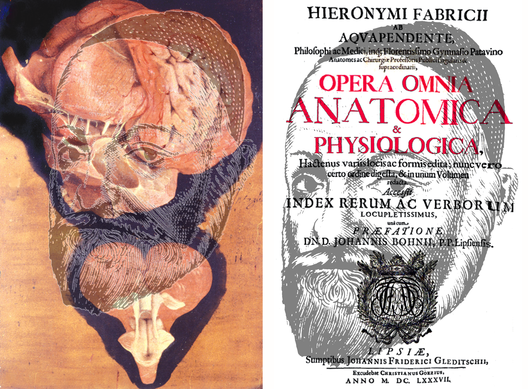Hieronymus Fabricius ab Aquapendente1537–1619
Fabricius (or Fabrici) ab Aquapendente conducted many dissections on both humans and other animals in Padua, where he had among his students William Harvey (1578 –1657). He did not publish the results of his research until the seventh decade of his life. Although Fabricius’ anatomical images were used to illustrate the various editions of his works, the originals of these images, in the form of colour painting (“Tabulae pictae”) remained unknown to the public until they were discovered in 1910 in the depositories of the Marciana Library in Venice by the anatomist and historian, Giuseppe Sterzi. These images, painted by artists of the Bassano school, are of exceptional scientific and artistic quality and can be considered among the most beautiful anatomical images ever produced. Fabricius, who is mainly credited for his discovery of the venous valves, was an authority on the senses and published De Visione de Voce de Auditu in 1600. As with most works on the senses, more words were devoted to vision than to the voice or to hearing. Fabricius sought to integrate the emerging knowledge of visual anatomy with the traditional views of Aristotle. Most particularly, he supported the Aristotelian theory that light is received by the eye, rather than emitted from it. However, he also adhered to the Galenic notion that the ‘seat of vision’ was the lens. Paradoxically, Fabricius placed the lens appropriately towards the front of the eye and defined the optical centers of several surfaces of the eye. Thus, the seen was set for others (like Kepler) to combine the anatomical optics of the eye with the geometrical optics of refraction. Fabricius is portrayed twice. On the left he is shown in one of the surviving coloured plates of the brain from 1600; it has been argued that this is the first illustration of the Sylvian fissure, and it was produced four decades before Sylvius’s name was associated with it. On the right, Fabricius is shown in the title page of his Opera Omnia.
